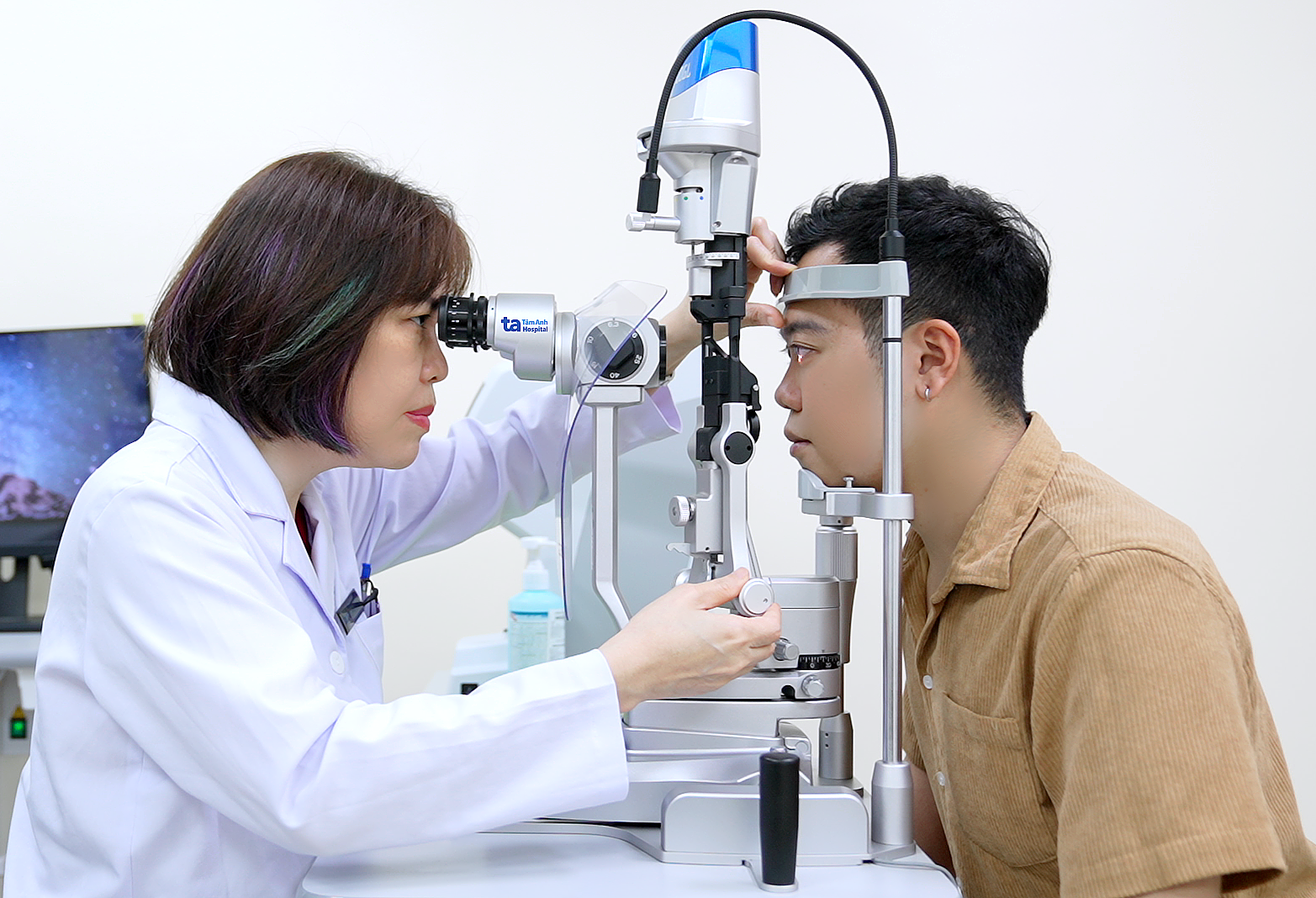Nguyen Thi Thu Hien, MD, PhD, Head of the Refractive Surgery Department at the High-Tech Eye Center, Tam Anh General Hospital, explains that myopia is not simply blurred distance vision but involves changes in the eyeball's structure. Unhealthy habits can accelerate myopia, elongating the eyeball. Rapid myopia progression can lead to complications like retinal detachment, macular degeneration, cataracts, and glaucoma at a young age.
Continuous use of electronic devices
Many people work with computers for extended periods, perhaps 4–6 hours daily, or even more. Dr. Hien says that constantly looking at screens causes eye strain and dryness, forcing the eye muscles to work continuously to adjust focus, thus weakening them over time. Eye muscles overexert themselves to focus on screen details, especially small text or fast-moving images, increasing the risk of strain and fatigue.
Looking too closely
The habit of hunching over or lying on one's side while using phones, computers, or reading reduces the distance between the eyes and the viewed object to just 15–20 cm, while the ideal distance is 35–40 cm. Prolonged close-up viewing causes ciliary muscle spasms and disrupts eye focus. Besides affecting focusing, prolonged hunching also causes neck, shoulder, and back strain, along with other cervical spine problems.
 |
Associate Professor Hien performs a refractive eye exam on a patient with myopia. Photo: Tam Anh Hospital |
Associate Professor Hien performs a refractive eye exam on a patient with myopia. Photo: Tam Anh Hospital
Limited exposure to natural light
Natural light plays a crucial role in maintaining eye health. Lack of sunlight exposure can worsen myopia. Staying indoors for too long forces the eyes to work harder to focus on nearby objects, tiring the eye muscles and putting pressure on the eyeballs.
Dr. Hien explains that sunlight stimulates dopamine production, a neurotransmitter that helps regulate eye shape and limits axial elongation, the primary cause of myopia. Therefore, spending time outdoors daily, especially for children, effectively protects eyesight, prevents myopia, or slows its progression.
Unhealthy lifestyle habits
Many people spend hours in front of computer or phone screens for work or social media. Ophthalmologists recommend the 20-20-20 rule for office workers: every 20 minutes of close-up work, look at something 20 feet (6 m) away for 20 seconds to relax the eye muscles. Without recovery time, prolonged close-up viewing leads to chronic eye strain, dryness, and increased myopia.
Incorrect posture
Posture while reading or using electronic devices directly affects the eyes. Lying on one's back or stomach while reading or using a phone forces the eyes to adjust at unusual angles, increasing strain. Some people sit too close to their desks, leading to hunching or leaning, which strains both the lower back and the eyes from constantly looking down.
Dr. Hien recommends leaning slightly forward while working at a computer, not sitting completely upright, with feet flat on the floor, hip-width apart. Shoulders should be relaxed, not tense or hunched. Keep your chin in a natural position, avoiding "turtle neck" posture (excessive forward bending of the cervical spine and head), which strains the neck, shoulders, and back. The computer screen should be positioned below eye level to avoid tilting the head back or widening the eyes, which can cause dryness.
Khue Lam
| Readers can submit questions about eye diseases here for doctors to answer. |












